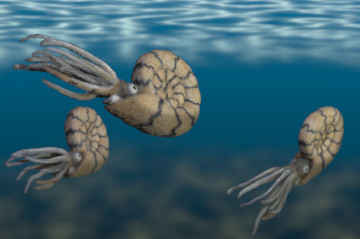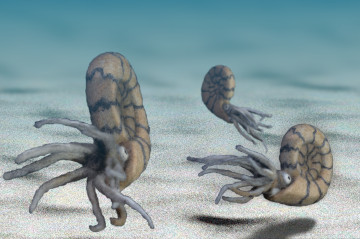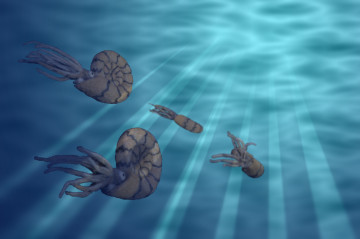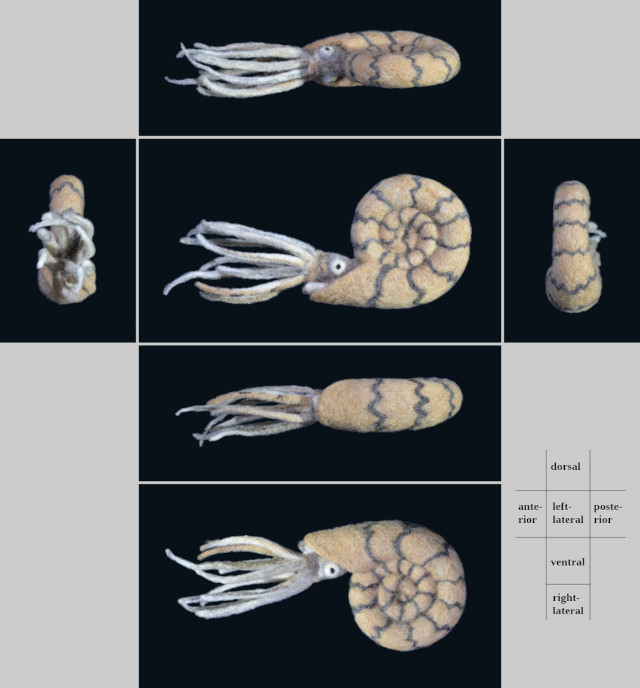Ammonite - Ammonoidea -
Ammonite is generally known as an index fossil of the Mesozoic era. But the subclass Ammonoidea already appeared in the Devonian period of the Paleozoic era 1).
Ammonites are resemble to the extant marine mollusc of the cephalopod subclass Nautiloidea (e.g. nautilus), but they are a group of the subclass Ammonoidea in the class Cephalopoda, and are more closely related to the subclass Coleoidea (e.g. octopuses, squids, cuttlefishes) 1).
The suture pattern of ammonoids which is seen radially on the shell is used for identification of the species 1).
The anatomical informations about the soft parts of Ammonite are little. So, this needle felted ammonite was reconstructed referring to the living nautiluses, squids or octopuses, and also Fig.14 of Mironenko(2015) 2). Nautilus has a hood (operculum, head shield), but Ammonite lacks it 3).
created in November 2016.
References :
- Digital Atlas of Ancient Life (Paleontological Research Instituition) - Ammonoidea -
- Mironenko AA (2015) The soft-tissue attachment scars in Late Jurassic ammonites from Central Russia. Acta Palaeontol.Pol. 60(4):981-1000. (DOI:10.4202/app.00041.2013.)
- Monks N, Young JR (1998) Body position and the functional morphology of Cretaceous Heteromorph ammonites. Palaeontol. Electron. 1(1;1A):15. (DOI: 10.26879/98001.)





